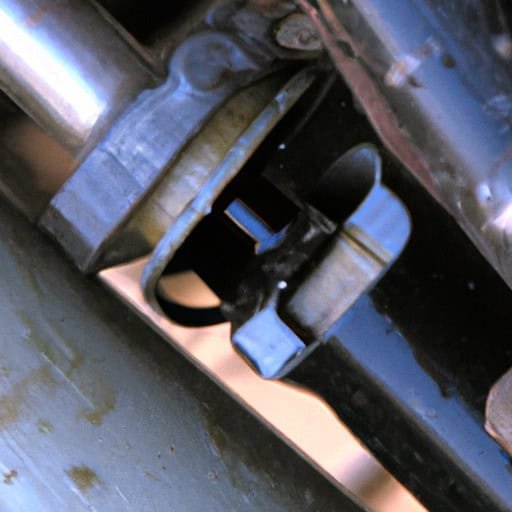Maintaining your residential water well is vital to ensure a consistent and clean water supply for your household. From regular inspections and testing to proper cleaning and disinfection techniques, this article will provide you with essential tips on how to effectively maintain your water well. By following these guidelines, you can prevent potential issues, extend the life of your well, and ensure that you and your family have access to safe and reliable water for years to come.
Water Well Basics
Understanding the Residential Water Well System
When it comes to maintaining your residential water well, it’s essential to start with a basic understanding of how the system works. A residential water well is a system that provides water to your home from an underground source, known as groundwater. The primary components of a residential water well system include the well itself, the pump, the pressure tank, and the plumbing that distributes the water throughout your home. By having a solid understanding of these components, you will be better equipped to properly maintain your water well system.
Components of a Residential Water Well
Let’s take a closer look at the components that make up a residential water well system. First and foremost, there is the well, which is the structure that is drilled into the ground to access the groundwater. The pump is responsible for bringing the water up from the well and into your home. The pressure tank helps regulate water pressure and reduces the frequency of the pump turning on and off. Lastly, the plumbing system distributes the water throughout your home, allowing you to access it from various faucets and fixtures. Understanding the role of each component will help you identify potential issues and perform necessary maintenance.
Regular Inspections and Testing
Importance of Regular Inspections and Testing
Regular inspections and testing are crucial for maintaining the functionality and safety of your residential water well system. Inspections can help identify any potential problems before they become major issues and ensure that your well is operating efficiently. By conducting regular tests, you can also ensure that your water meets the necessary quality standards, preventing any health risks that may be associated with contaminated water. Regular inspections and testing should be an integral part of your well maintenance routine.
Hiring a Professional Well Inspector
While it’s possible to conduct basic inspections on your own, it is highly recommended to hire a professional well inspector for more comprehensive evaluations. A professional inspector has the knowledge, experience, and tools to thoroughly assess your well system, identifying any hidden issues that may be lurking beneath the surface. They will also conduct water quality tests to determine if your water is safe for consumption. Hiring a professional well inspector provides peace of mind and ensures that your well receives the attention it deserves.
Signs of Potential Problems
Even though regular inspections are important, it’s essential to keep an eye out for potential problems between inspections. Some signs that may indicate issues with your residential water well system include low water pressure, strange smells or tastes in the water, changes in water color, and unusual noises coming from the pump or plumbing. If you notice any of these signs, it’s important to address them promptly to prevent further damage and ensure the longevity of your well system.

Water Quality and Treatment
Monitoring Water Quality
Maintaining good water quality is essential for the health and well-being of your family. Monitoring your water quality on a regular basis allows you to identify any potential contaminants and take appropriate action if necessary. You can monitor the quality of your water through various methods, such as visual inspection, odor detection, and regular water testing. By being proactive in monitoring water quality, you can address any issues before they become a serious concern.
Common Water Quality Issues
There are several common water quality issues that homeowners may encounter. These include bacteria and other microbial contaminants, heavy metals, such as lead or arsenic, excessive minerals like iron or manganese, and chemicals from agricultural or industrial activities. Each water quality issue requires a specific treatment method to effectively address the problem. Understanding the potential issues you may face will help you take appropriate steps to maintain the quality of your water.
Water Treatment Methods
To ensure that your water is safe and free from contaminants, there are various water treatment methods available. These methods include the installation of water filtration systems, water softeners, and ultraviolet (UV) disinfection systems. Filtration systems can remove particles and impurities, while water softeners can remove minerals that cause hardness. UV disinfection systems use ultraviolet light to kill bacteria and other microbial contaminants. Depending on your specific water quality issues, you can choose the appropriate treatment methods to keep your water clean and safe.
Maintaining Water Treatment Systems
Once you have installed water treatment systems, it’s important to properly maintain them to ensure their effectiveness. Regularly changing filters, cleaning the system components, and monitoring the system’s performance are essential maintenance tasks. Follow the manufacturer’s guidelines and recommendations for maintenance to keep your water treatment systems functioning optimally. Maintaining your water treatment systems will help protect your water quality and prolong the lifespan of the equipment.
Well Maintenance Tasks
Maintaining the Wellhead
The wellhead is the visible part of your residential water well system and requires regular maintenance to prevent potential issues. Inspecting the wellhead periodically for any signs of damage or deterioration is important. Ensure that the wellhead is securely sealed to prevent any contamination from entering the well. Additionally, making sure that the wellhead is clear of debris, vegetation, and other obstructions is crucial for proper ventilation and access.
Inspecting and Cleaning the Well Cap
The well cap is another critical component that should be inspected and cleaned regularly. The well cap covers the opening of the well and helps keep out debris, insects, and other contaminants. It’s important to ensure that the cap is intact and properly sealed to maintain the integrity of the well. Regularly cleaning the well cap to remove any accumulated dirt, dust, or debris will help prevent potential issues and maintain the longevity of your well system.
Monitoring the Well Pump
The well pump is responsible for bringing the water up from the well and into your home, making it a vital component of your residential water well system. Regularly monitoring the pump’s performance is essential for early detection of any problems. Keeping an eye out for any unusual noises, fluctuations in water pressure, or increased electricity consumption can help you identify potential pump issues. If you notice any problems, it’s best to contact a professional well pump technician for a thorough inspection and necessary repairs.
Checking Pressure and Water Levels
Maintaining proper pressure and water levels is crucial for the efficient operation of your water well system. Regularly checking the pressure and water levels ensures that your system is working optimally. Monitor your pressure tank’s pressure gauge and record the water levels periodically to establish a baseline. Any significant fluctuations in pressure or water levels may indicate an underlying issue that needs to be addressed promptly.
Regular Cleaning and Disinfection
Regularly cleaning and disinfecting your residential water well system helps prevent bacteria and other contaminants from accumulating. Periodically flushing the well by running a large amount of water through the system can help dislodge any sediment or buildup. If necessary, chlorinating the well can effectively disinfect the system. However, it’s important to follow the proper guidelines and recommendations to ensure safe and effective cleaning and disinfection.
Well Rehabilitation and Redrilling
Over time, wells may experience a decline in performance or encounter more significant issues. In such cases, well rehabilitation or redrilling may be necessary. Well rehabilitation involves techniques to restore the well’s efficiency, such as chemical treatments or mechanical removal of obstructions. Redrilling, on the other hand, involves drilling a new well in a different location if the current well is beyond repair. Consulting with a professional well contractor will help determine the most appropriate course of action for your specific situation.

Managing Potential Contaminants
Protecting Against Surface Contamination
Surface contamination poses a risk to the quality of your groundwater. To protect against surface contamination, ensure that the area surrounding your well is properly maintained. Avoid using pesticides, fertilizers, or any harmful chemicals near your well, as they can leach into the groundwater. Additionally, prevent any potential sources of contamination from being located uphill from your well. Regularly inspect the area around your well to identify and address any potential risks.
Preventing Groundwater Contamination
Preventing groundwater contamination involves implementing measures to safeguard your water supply. Avoid disposing of hazardous materials, such as chemicals or medications, down the drain or toilet as they can contaminate groundwater. Properly store and dispose of any potentially harmful substances in accordance with local regulations. Regularly inspect and maintain any underground fuel tanks to prevent leaks that can contaminate the groundwater. By taking these preventive measures, you can help protect your water supply from contamination.
Handling Chemical and Hazardous Materials
If you need to use chemicals or hazardous materials on your property, it’s important to handle them with care to prevent any potential contamination. Follow the manufacturer’s instructions for proper usage and disposal. Store these materials in secure containers in a well-ventilated and designated area. Make sure to keep them away from any potential sources of water. If you are unsure about how to handle certain chemicals or hazardous materials, consult with professionals who specialize in their proper usage and disposal.
Dealing with Mechanical Issues
Well Pump Troubleshooting
Mechanical issues can sometimes arise with the well pump, affecting the functionality of your water well system. If you encounter problems such as low water pressure, frequent pump cycling, or no water flow, there are a few troubleshooting steps you can take. Check the circuit breaker to ensure it hasn’t tripped, as this may cause the pump to stop working. Inspect the pressure tank for any signs of damage or malfunction. If these troubleshooting steps do not resolve the issue, it’s best to consult with a professional well pump technician for further assistance.
Repairing or Replacing a Well Pump
In the event that your well pump requires repair or replacement, it’s essential to seek professional help. Well pump repairs can range from simple fixes, such as replacing a faulty pressure switch, to more complex tasks, such as rewiring or replacing the entire pump. A professional well pump technician will have the expertise and tools necessary to diagnose and address the problem correctly. In some cases, if the pump is beyond repair, a replacement may be necessary. Trusting a professional ensures that the repairs or replacement are done correctly and efficiently.
Fixing Pressure Tank Problems
Issues with the pressure tank can affect the water pressure and efficiency of your water well system. If you find that your pressure tank is constantly cycling on and off, it may indicate a problem with the tank’s air charge. This can often be resolved by adjusting the pressure switch or recharging the tank with air. Leakage or damage to the tank may require repairs or replacement. It’s important to consult with a professional to accurately diagnose and address pressure tank problems to ensure optimal performance and prevent further damage.

Seasonal Maintenance
Spring and Summer Maintenance
Spring and summer are ideal times to conduct seasonal maintenance on your residential water well system. Inspect the area surrounding the well for any signs of erosion or damage caused by winter weather. Remove any debris or obstructions that may have accumulated around the well. Inspect and clean the well cap to ensure it is properly sealed. Test the water quality to ensure it meets the necessary standards. Additionally, monitor the system’s performance and maintain proper water levels throughout the warmer months to prevent strain on the well.
Fall and Winter Maintenance
As the colder months approach, it’s important to take specific maintenance steps to prepare your water well system for winter. Insulate any exposed pipes to prevent freezing and potential damage. Ensure that the well cap is securely sealed to prevent any infiltration of snow or ice. Periodically check the well pump during cold snaps to ensure it is operating effectively. Consider installing a well cover to provide additional protection against extreme weather conditions. By taking these maintenance measures, you can help protect your well system from winter-related issues.
Emergency Preparedness
Developing an Emergency Plan
Being prepared for unexpected events is crucial when it comes to your residential water well system. Develop an emergency plan that outlines the steps you and your family should take in the event of a well-related emergency. This plan may include contacting a professional well contractor, shutting off the power supply to the well system, or having alternative sources of water available. Communicate this plan to all household members to ensure everyone knows what to do in an emergency situation.
Emergency Water Supply
In the event of a prolonged well system outage, it’s important to have an emergency water supply readily available. This can be in the form of bottled water, water stored in large containers, or access to a nearby water source. Make sure to update and rotate your emergency water supply regularly to ensure its freshness and usability. Having an emergency water supply on hand ensures that you and your family have access to safe drinking water, even during unforeseen circumstances.
Power Outages and Backup Generator
Power outages can affect your well system’s ability to pump water into your home. Investing in a backup generator can help ensure that your well system continues to operate during power outages. A backup generator can be connected to your well pump to provide electricity and maintain water availability until power is restored. It’s important to consult with a professional electrician to properly install and connect a backup generator to your well system to ensure safe and efficient operation.
Understanding Water Usage
Conserving Water
Conserving water is not only beneficial for the environment but also helps reduce the strain on your residential water well system. Implementing water-saving practices, such as fixing leaks, using water-efficient appliances, and adopting simple habits like turning off the faucet while brushing your teeth, can make a significant difference in water conservation. Conserving water not only helps maintain the sustainability of your well system but also reduces your water bill and contributes to a greener future.
Avoiding Overuse and Straining the Well
Overusing your residential water well system can lead to potential problems, including decreased water levels, strain on the pump, and increased energy consumption. Be mindful of your water usage and avoid excessive use that may overwhelm the well system. This includes activities such as running multiple water-intensive appliances simultaneously or using excessive amounts of water for outdoor irrigation. By being aware of your water usage and making conscious choices, you can prevent unnecessary strain on your well system and ensure its longevity.
Managing Water Demand
Understanding and managing your water demand is crucial for maintaining a healthy balance in your residential water well system. Consider the water needs of your household and adjust your usage accordingly. For example, spreading out laundry and dishwashing throughout the week instead of doing them all in one day can help manage water demand. Additionally, being mindful of seasonal changes and adjusting your water usage accordingly can prevent overuse and strain on your well system. By managing your water demand effectively, you can ensure a continuous and sustainable water supply for your household.
Keeping Records and Documentation
Maintaining a Well Log
Keeping a well log is a valuable practice when it comes to maintaining your residential water well system. A well log documents important information about your well, including installation or drilling dates, well depth, pump specs, and any repairs or maintenance performed. This log provides a historical record of your well system and helps track its performance over time. By maintaining a well log, you can easily refer back to important details and make informed decisions regarding maintenance or upgrades.
Documenting Inspections and Maintenance
Documenting inspections and maintenance is a crucial part of responsible well ownership. Keep a record of all inspections and maintenance tasks performed on your well system, including dates, findings, and any repairs or adjustments made. This documentation helps create a maintenance history for your well, making it easier to identify patterns, evaluate system performance, and ensure that all necessary tasks are being completed. By documenting inspections and maintenance, you demonstrate a proactive approach to well maintenance and facilitate future troubleshooting.
Maintaining Water Test Records
Regularly testing the quality of your water is important for ensuring its safety and identifying any potential issues. Keep a record of all water test results, including dates and specific parameters tested, such as bacteria levels, pH, or mineral content. By maintaining these records, you can track any changes in water quality over time, identify potential trends or concerns, and address any issues promptly. This documentation provides a valuable resource for monitoring the overall health of your residential water well system.
In conclusion, properly maintaining your residential water well is essential for ensuring the availability of clean and safe water for your household. By understanding the basics of your water well system, conducting regular inspections and testing, and implementing good maintenance practices, you can prolong the lifespan of your well system and prevent potential issues. Managing potential contaminants, dealing with mechanical issues, and practicing water conservation are vital for the overall health and sustainability of your well. Additionally, being prepared for emergencies, understanding your water usage, and keeping detailed records will help you stay proactive and informed about the well’s condition. With a friendly tone and comprehensive information, this article aims to equip you with the knowledge and tools necessary for proper residential water well maintenance.

